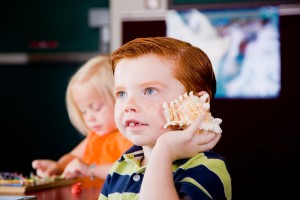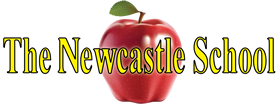Picking The Best Preschool
From Savvy Source.com…
The folks at TheSavvySource.com, an online database with ratings and reviews of over 55,000 preschools across the country, have offered their top five tips for choosing the best preschool for your child in Utah. Find out the key educational factors that will help your child’s learning.
Recent studies have shown that children with a quality preschool education do better in school, get higher paying jobs, and are less likely to do drugs or commit crimes than children who don’t attend Pre-K. When you factor in a potentially ultra-competitive admissions process and a wide variety of educational philosophies, finding the right preschool for your child can be more daunting than ever, especially for new parents.

Look for a preschool where children have choices.
Finding the Right Preschool
- ABC’s, 123’s – early years are the time to start
- Play time every day (imaginative, physical)
- Children should have choice of some activities
- Teachers interact positively with children
- Alignment with your home values
- Make sure there the ABCs and 123s are a key part of the school’s learning goals.
Early reading, for example, is a predictor of later success in life, so being able to get ahead or catch up in preschool is key. We know focus on cognitive areas such as ABCs and 123s matters enormously. For example, how well a child reads at the end of first grade predicts how well they read in later grades, graduation rates and even their income level as an adult. The very best preschools help ready children advance beyond age norms, but they also nurture children who are behind so they catch up in these early years.
How can you tell if these basics are covered? Look for letter and number materials in the classroom and also ask teachers. The environment can be very telling. Look for a well — stocked bookcase, the alphabet up on the walls, tracing paper, maps, clocks, and puzzles. And just ask — most preschools will share their philosophies on early literacy and math. - Ask how “play” is woven into the day, particularly imaginative and physical play.
It might seem counter to the first tip about reading and math. Most parents assume if there is a focus on ABCs and 123s, it is drill and kill, and there is little room for play. Great preschools do both, and success in the early years of a child’s education often allows children opportunities to explore the building blocks of literacy and math through play.
Other kinds of play are just essential as well. Imaginative play, for example. Some form of daily “pretend play” improves emotional/behavioral skills. And emotional/behavioral skills predict academic performance later. When you visit the school, look for a costume corner, art up on the walls, pretend kitchen sets and pairs or small groups of children working together creating and collaborating.
Some sort of physical play helping children develop gross motor skills matters, too. There is a direct correlation between the gross motor skill development of a preschooler and long-term health. Ask whether outside play is a part of a typical day. And also observe when you visit the school if there is room for kids to run around. Does the school have a climbing structure, tricycles, balls for children to throw? - Ask if children are able to choose some of their activities during the day.
Studies show that children who get to choose some activities preschool have better life outcomes. Studies show that when children have the chance to make choices at the tender age of 3 or 4, rather than having all dictated by teacher, they have better long term social and life outcomes on a variety of measures.
So, while you want to be sure that there are a variety of materials designed to help kids with literacy, math, time — and — space, and science skills, for example, you also want to be sure that the day is peppered with opportunities for your child to choose his own activities, and is not simply teacher-led instruction. Looking at a school’s schedule can be quite useful on this. See if there are windows of time that are dedicated to play and/or if there are stations where children are able to choose what to do. - Look for close alignment with “home values.”
The way the school handles social and emotional issues should be similar to your approach at home. Consistency for preschool age children is essential in helping them develop. One way to learn more about the school’s approach is to ask the teachers or director a role playing scenario. You might ask if two children always played together and one day one of the two decides to play with another child and leaves his friend behind, how the teacher might handle that situation. And then think about whether that approach is the same one you would have taken. - Check for positive and/or nurturing relationships between teachers and children.
This is what every parent knows by instinct: nice teachers matter, especially for very young children. This is first time in many instances that your child will be separate from you for any extended period of time. It is very important that these new adult relationships with a teacher be nurturing and positive. Believe it or not, strong, positive relationships with a teacher actually predicts children’s cognitive advancement in preschool (and it can’t be safely assumed to be a feature of every preschool).
So when you visit the school, look to see if teachers smile and are generally encouraging of children. Look to see how the teachers interact with the other children in the classroom and if there seem to be strong connections between them. Also talk to parents at the school about their experience.
For checklists of what to look for in a school, recommendations of school types and other key tips to finding the right preschool please, visit http://www.savvysource.com/preschools to download the Savvy Source Preschool Selection Ebook.
© 2008 MSNBC Interactive

